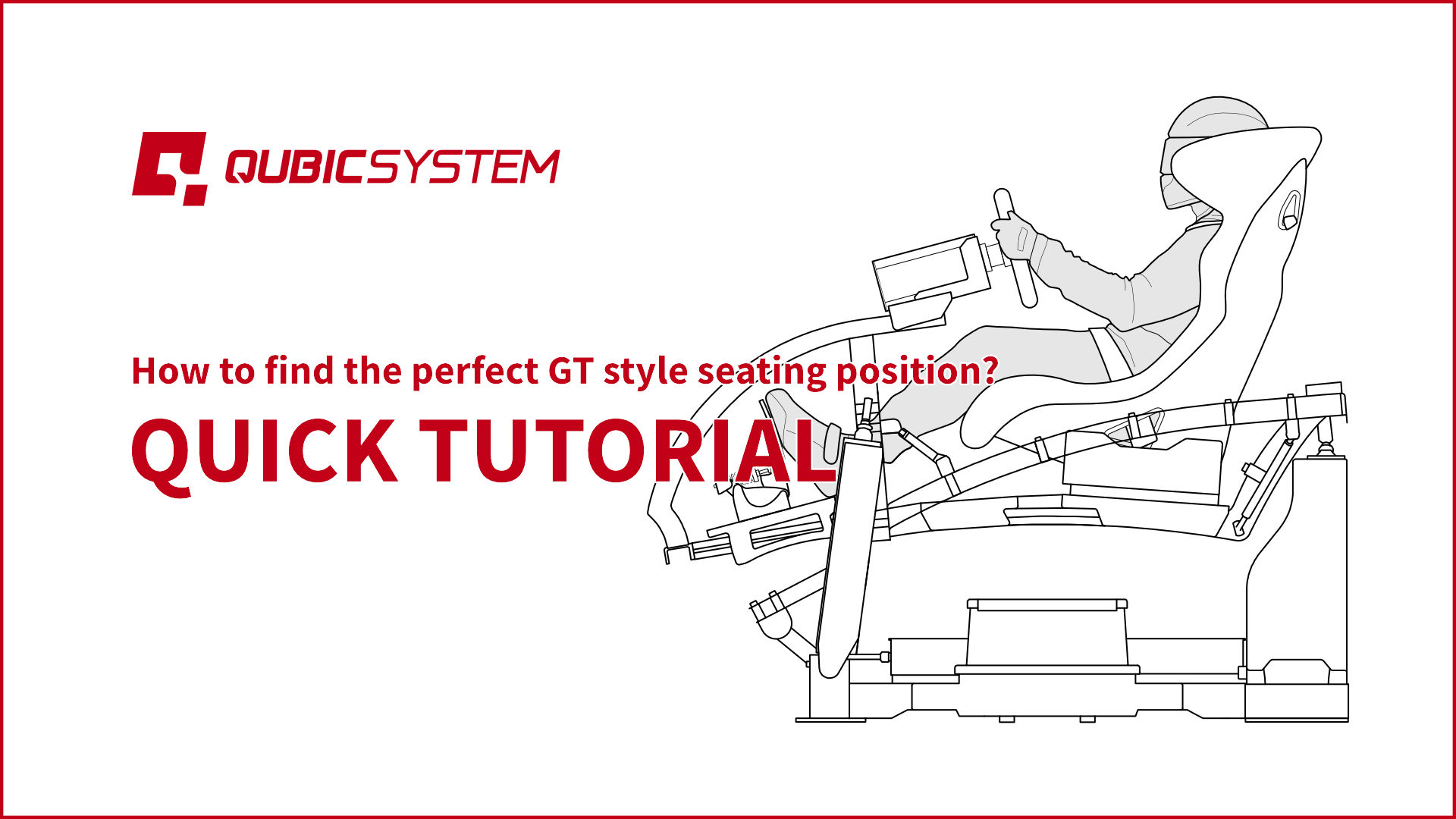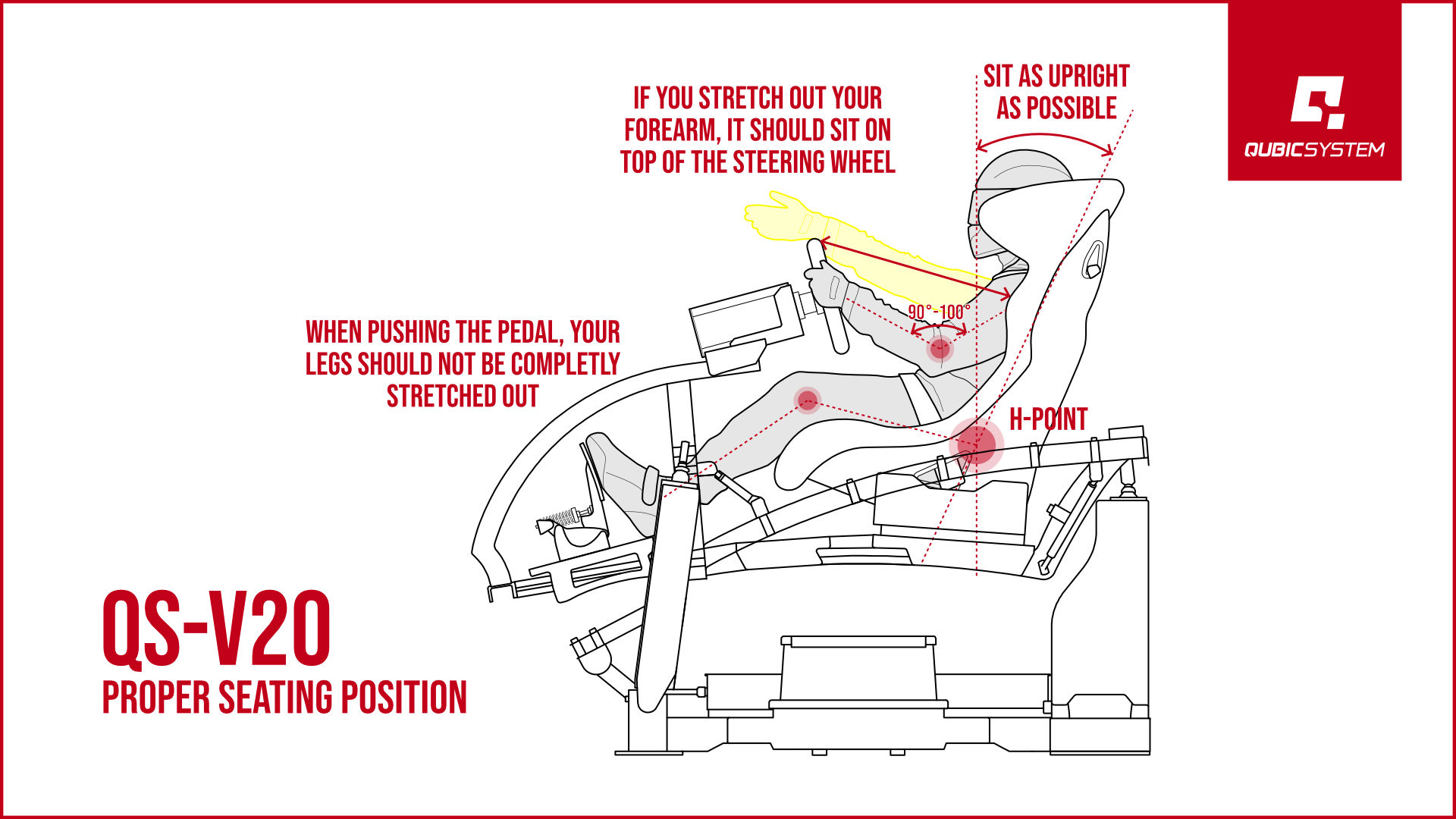
How to find the perfect GT style seating position?
The GT style seating position.
Basically, there are two categories of seat position in sim racing: GT (upright) and formula (reclined). GT seating position tends to be quite straight, perhaps even more vertical than your daily car, whereas formula seating positions emulating F1 are closer to 45 degrees. The position you decide on can be dictated by the capabilities of your cockpit or the type of race car you’re trying to simulate. Today we were talking about GT proper seating posture. So is there actually an ideal position for all drivers? Well, there is something very close to a perfect position that allows for comfort (which leads to less fatigue), leverage, bracing and good
control of the vehicle in all types of driving conditions. If you take a look closer at a professional sports car race, you will see almost every driver using this same set-up. Let’s find out what is the correct position and how to set up and adjust the sim racing cockpit.
1The sim racing seat
The first step in finding your driving position is adjusting your racing seat or whole cockpit because every other adjustment is predicated on the correct seat set-up. In the beginning, make sure that your seat is well attached to the sim rig. Obviously the best possible choice is a dedicated race seat or bucket seat, but if you don’t have those available, a simple fixed seat will do. Do not forget that you will get a better feel as to what the rear end of the car is doing if your body is firmly anchored to the seat.
2Distance to Steering Wheel
The easiest way to achieve the ideal distance from the steering wheel is to adjust your seat so that when you stretch your arms straight out, your wrists lie across the top of the steering wheel. Make sure your shoulders are touching the seat back. Once you place your hands on the wheel, your elbows will be bent at an approximate 90–100 degrees, which is ideal. Such an arrangement of the hands will allow you to drive the car with confidence, it will be less tiring for the muscles, which under the influence of changing track conditions and constant vibration of the engine get tired quite quickly.
3Steering wheel height
The height of the center of the steering wheel should be near the base of the neck. This is, of course, much higher than in our street cars, but it is necessary to engage the larger muscles of the upper arms, shoulders and back to have better control of the car. Theposition you will want to take is a GT-style seating position, rather than an F1 seating position. This will be more comfortable for you and will allow for longer sessions.
4Steering wheel hands position
Your hand position on the steering wheel should be in the 9 and 3 o’clock positions, with the thumbs in contact with the 9 and 3 o’clock spokes of the wheel. This will give you more direct feedback from the front suspension in case of over or under-steering conditions. Your right hand will also be in a better position for reaching the gear shift lever and allows for a more natural movement when grabbing for that next gear. Locating your hands this way allows for more steering input in tight corners, without your forearms crossing over each other.
5Distance to the pedals
Not as important as the other two, as it comes down to preference more than anything else, but make sure your legs aren’t too tight or too stretched to work the pedals effectively. The most important thing to note is to find what is most comfortable for you. Some racers prefer to have their legs a little more stretched out, while others prefer to have them a little more compressed. Be sure that you are able to press down on, as well as rest your feet on, the pedals.


To conclude
We have done our best to provide some important details of setting up the correct GT-style position that will give you all the possible advantages during racing. In addition, our motion cockpits are designed to be able to provide drivers with a correct and ergonomic position behind the wheel without additional modifications. We hope that each of you will be able to find the perfect position and improve your performance both in virtual races and on the real track.



